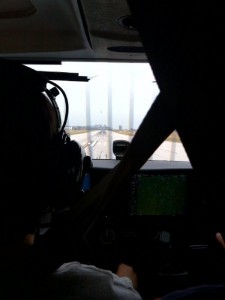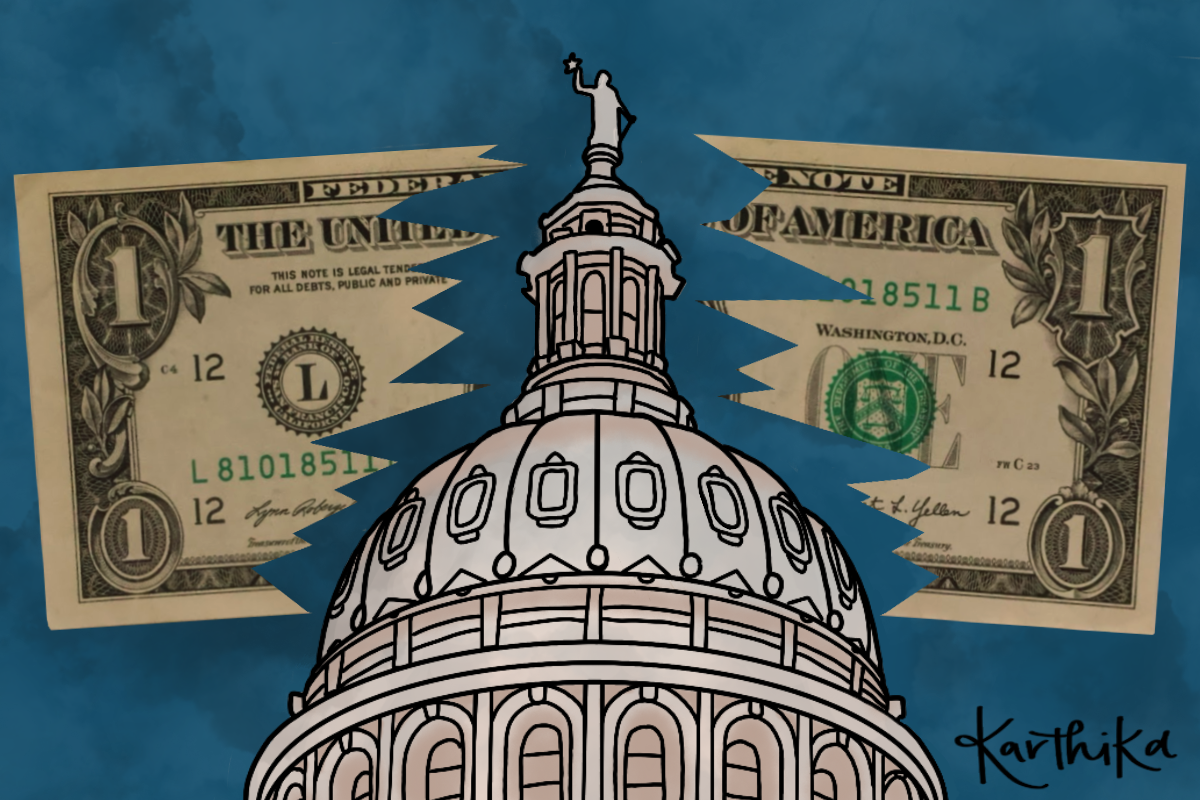
By Ben Cowlishaw
Special to The Sidekick
For some CHS students and teachers, the worst part of flying isn’t a long line at security, or the airline losing their luggage. It’s not a crying baby in the next row, or the flight attendant running out of Dr Pepper; its fear of the flight itself.
You might ask yourself, “How can blasting through the sky, in a pressurized metal tube, possibly be safe?” Thinking of famous accidents like US Airways 1549 which violently landed in the Hudson River, or the four flights involved in the 9/11 terrorist attacks, can draw our minds away from the reality: aviation is one of the safest modes of transportation available.
As a student pilot myself, one might not believe I used to be terrified of flying. When I was much younger, I was on an American Eagle flight in a thunderstorm on the way home from my grandparents in Pensacola, Fla. The turbulence was so severe, it was enough to convince me flying was unsafe and ludicrous. Many peoples’ fears of flying can come from a previous flying experience that didn’t go as smoothly as they would have liked. For others, it may be that they know someone who was in an accident.
Many just don’t know the facts and are convinced flying is extremely unsafe. Statistics show you are much more likely to die in your car driving to the airport than during your flight.
In mid-January, a 15-year-old student pilot from Fort Worth Dunbar High School and his instructor died when their Tecnam P2002 mysteriously nose-dived and crashed in northern Ellis County. Now his high school is deciding on the future of its pilot program in the wake of the accident.
Across the country students can be seriously injured, and some have even lost their life playing high school sports, but no high school would consider dropping their sports program, and why should they? The benefits of it far outweigh the risks. Many of my friends and classmates brought up the incident to me with concern, asking why I fly dispite the risk. My parents, who very well know the safety of flying, had serious questions about if something serious were to happen to me. Tragic accidents like this are extremely rare. There is much greater risk involved in a Driver’s Ed drive time than there is in a Flight School instruction flight.
NOAA (the National Oceanic and Atmospheric Administration) says the odds of being struck by lightning in your lifetime (80 years) are 1/6,250. It might be cliché to compare odds of being struck by lightning, but it looks like a guarantee in comparison to the chance of being in a plane crash. In 2004, 30 accidents occurred in the major airlines. Considering the airlines flew more than 11 million flights carrying 655 million passengers, 30 accidents is minuscule. Just two of these flights were fatal, with 14 fatalities. Only one out of every 457,000 passengers that board a flight is involved in an accident. This means that when you step on a flight, there are the same odds of the flight crashing as there are being struck by lightning about 73 times in your life.
In contrast, driving is by far one of the most dangerous. In 2005, according to car-accidents.com, there were roughly 6.42 million car accidents in the United States with 2.9 million injured and 42,643 killed. That’s about 115 deaths every day, more than eight times the number of deaths from plane crashes the entire year before.
CHS freshman Matt Smith is less than a fan of flying.
“I absolutely hate flying. I would much rather take a car because it is less expensive and much safer,” Smith said.
Smith says he fears flying because he believes that it’s easy for something to go wrong, and when it does, the plane is very likely to crash.
“I feel fine for the take off… it’s when we start to descend that makes me really uncomfortable. I get butterflies in my stomach. The feeling makes it seem like were falling and won’t stop. For me, that’s the scariest part of the trip,” Smith said.
This is just one example of the common misconception that flying is exceptionally dangerous.
So why is it that driving can be extremely dangerous, and flying is about as safe as anything we do, but we fear flying the most? Why is it that an accident on Interstate 635 doesn’t affect us any more than an inconvenience of our commute, and a plane crash in the news can keep many of us flightless for months? There are several answers:
When we are driving, we have a sense of control. We know what we are doing; we feel that we are excellent drivers. We know how to get where we’re going.
When flying, we have no control. We are at the mercy of the pilots, air traffic controllers, and all other personnel involved. We can’t walk up to the cockpit, tell the pilots we’d like to take it from here and fly ourselves.
What needs to be taken into consideration is that pilots, flight attendants, air traffic controllers and mechanics go through months, even years of training, and fairly often, they go back and train even more.
Fears of flight can come from your childhood, as with many phobias. World Geography teacher Lauren Fairchild developed a fear of flying in her adult life, because she never flew as a kid. During most of the flight, she says she is fine, but she doesn’t like the takeoff and landing.
“On one of the first trips I had with my husband, I nearly broke his hand [holding onto it],” Fairchild said.
CHS freshman Kara Williamson developed a fear of flying because she got airsick as a kid. She plays her iPod and tries to fall asleep, but also has to take medicine.
Aspects of the flight itself can make us uncomfortable, and even sick. Turbulence can be frightening. The flight starts to get bumpy. You have trouble holding onto your book and your Coke spills all over the tray table. The plane quickly drops, and the only thing holding you from taking flight in the cabin is your seat belt.
Turbulence is common during flight, just like a car shaking on rough road or a boat rocking in the waves. No, the plane isn’t going to break apart. What some people can’t seem to wrap around their minds is that planes are built to fly. Boeing, Airbus, any and all aircraft companies build planes to fly, not to crash. An airliner is built to withstand far greater forces than what occurs on a routine flight. A plane won’t fall out of the sky if the engines stop; it will glide to a safe landing. The wings won’t fall off in turbulence; they are built to be strong, but also flexible.
The way the local and national media handle accidents is another major contributing cause of fear. In the local news, a car accident is mentioned because it causes a major backup on the interstate. On the national, even world news level, a fatal plane crash is covered for weeks, sometimes months, and still mentioned years down the road. It is due to their extremely rare nature.
If planes crashed at the same rate cars do, the skies would be shut down. Nobody would be allowed to leave the ground. Driving isn’t overly dangerous, it’s still fairly safe. It is convenient and universal; nothing is going to stop people from getting where they need to go.
Freshman Daniel Park was afraid of flying until the first time he flew when he was 7.
“[I was afraid that] If there’s a tiny hole in the window, everything would get sucked out of the plane, and other ‘Hollywood stuff’ like that,” Park said. “I also was scared that it might crash because I thought a terrorist might crash it.”
He now feels very safe flying because of tighter security, and the rarity of plane crashes.
“I like how it’s so calm up there and I’m able to see everything on the ground,” Park said.
New Tech sophomore Danielle Hoard enjoys flying as well.
“I like the takeoff and landing part, it’s pretty fun,” Hoard said. “I feel pretty safe, but during the flight I’ll have a couple of thought about what might happen.”
Flying has changed tremendously over the years to prevent other accidents from occurring. For instance, starting in 1991, a series of plane crashes involving Boeing 737s occurred when the planes suddenly and violently rolled on their side and fell to the ground. Three 737s crashed, killing 204. Three other flights had a problem, but were able to land safety; the pilots on these flights were able to tell investigators what happened, giving them major clues. They determined the problem was in the rudder, part of the tail that helps with turning. The servo, which physically moves the rudder, was susceptible to jamming, and even moving opposite the pilot’s command. The rudder servo on every 737 was repaired. A similar accident hasn’t happened since.
What has brought about the biggest changes in the way we fly is 9/11. More than 3,000 Americans lost their lives because of an act of terrorism. Much of America has emotional wounds which they still suffer from today.
Freshman Dani Lilly said she has been afraid of flying ever since her mom cancelled their trip to Florida out of post-9/11 anxiety. 9/11 was one of the darkest days in aviation and American history. Immediately, new security measures were put in place. Non-passengers can’t go through security. All carry on belongings are thoroughly scanned and searched, and all checked baggage is tested for traces of explosive chemicals.
The luxury of getting to the airport 30 minutes before your flight and having your family walk you to the gate is no more. The longer security process can be very inconvenient, but it has saved countless lives. Terrorism plots have been foiled over and over again in the wake of 9/11, and even though the system is not perfect, flying is safer now than ever in the past.
What seems like a rational fear is in actuality unjustified. Flight safety has developed so much in the 80 years of the airline industry that most pilots go through their entire career without once encountering a significant event. Flying is one of the safest modes of transportation, but if you can’t kick the fear, bring your iPod or a book. You’ll land in no time.








